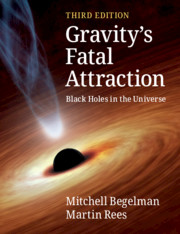The Edge of Infinity
In the past, they were recognized as the most destructive force in nature. Now, following a cascade of astonishing discoveries, supermassive black holes have undergone a dramatic shift in paradigm. Astronomers are finding out that these objects may have been critical to the formation of structure in the early universe, spawning bursts of star formation, planets, and even life itself. They may have contributed as much as half of all the radiation produced after the Big Bang, and as many as 200 million of them may now be lurking through the vast expanses of the observable cosmos. In this elegant, non-technical account, Melia conveys for the general reader the excitement generated by the quest to expose what these giant distortions in the fabric of space and time have to say about our origin and ultimate destiny.
- Contains the most up-to-date results from scientific research
- Suitable for all with a curiosity for the fundamental nature of the universe
- Beautifully illustrated throughout
Reviews & endorsements
'Il libro di Fulvio Melia è … un volumetto agile, ricco d'illustrazioni, in stile assolutamente divulgativo, ma con molti spunti originali e interessanti.' le Stelle
'… an interesting insight into the story of black hole research during the last few decades … A recommended read.' Astronomy Now
'Melia is Professor of Astronomy at the University of Arizona and there is no doubt that he knows what he is talking about.' Journal of the British Astronomical Association
Product details
No date availableAdobe eBook Reader
9780511252600
0 pages
0kg
5 b/w illus. 39 colour illus.
Table of Contents
- Preface
- 1. The most powerful objects in the universe
- 2. Weighing supermassive objects
- 3. The black hole spacetime
- 4. Formation of supermassive black holes
- 5. Relativistic ejection of plasma
- 6. Supermassive black holes in the universe.






